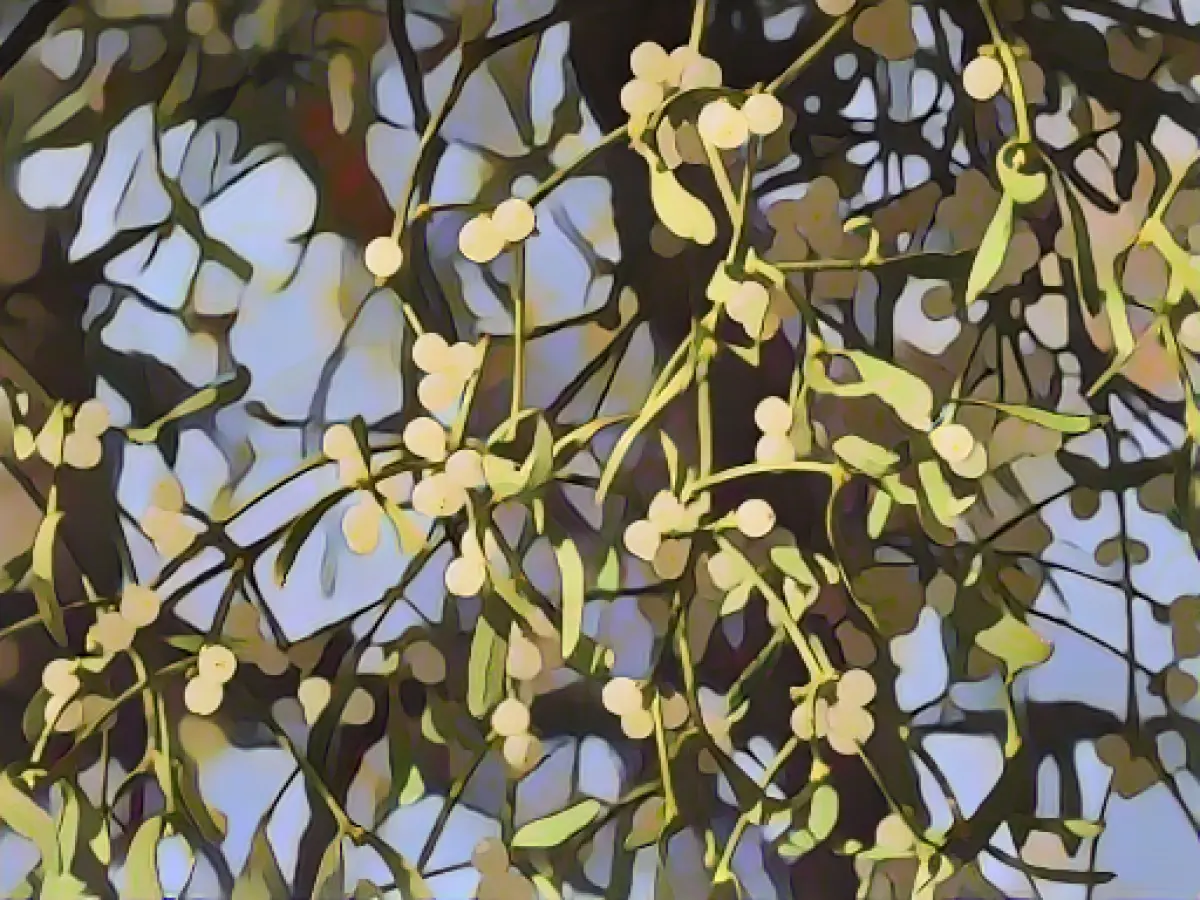Protecting Your Fruit Trees: The Nabu's Warning on Mistletoe
In an effort to safeguard orchards in the southwest, the Nature and Biodiversity Conservation Union (Nabu) strongly advises against ignoring mistletoe on your fruit trees. This intriguing plant, often employed in Christmas decorations, has the potential to wreak havoc on your trees and can be quite the challenge to control, especially with climate change altering the conditions.
Why You Should Act Now
Mistletoe insidiously embeds its roots deep into the tree's wood, exacerbating the tree's stress. This parasitic plant drains essential nutrients and water, potentially impacting the tree's overall health. Waiting until the infestation grows may cause more harm than good, and it's advisable to intervene early with pruning shears or a saw.
Nabu has launched a program to monitor the spread of mistletoe. Look out for the plants during November to February, as their counting and reporting online will help track the prevalence of these often-overlooked pests. Mistletoe hotspots have already emerged in the Rhine Valley, on Lake Constance, and in the greater Stuttgart area.
Uphold Traditions While Protecting Your Trees
Customs and traditions surrounding mistletoe harvesting must consider its role in nature conservation. Even with its aesthetic appeal during Christmas, maintaining healthy fruit trees requires that you prune out mistletoe growth.
Understanding the Impact of Mistletoe on Fruit Trees
Mistletoe causes damage to fruit trees by subtly depleting the nutrients and water they need to thrive. Over time, the tree's energy becomes diverted towards sustaining the parasite, weakening its overall health and reducing productivity.
Taking Action Against Mistletoe in Your Orchard
Regular monitoring of your trees during the winter months will help you catch mistletoe infestations before they become unmanageable. Pruning infected branches should be your first line of defense, as this minimally disruptive tactic can effectively control mistletoe growth. However, it's essential to approach pruning with caution, intending to limit the harm to the host tree.
If pruning alone proves insufficient, you may want to turn to chemical control methods. While herbicides can be effective, their use requires professional guidance to minimize harm to the host tree. Additionally, integrating biological control measures, such as using species that eat mistletoe berries, can supplement your strategies.
Ensuring Orchard Sustainability in a Changing Climate
Climate change may heighten mistletoe's spread and growth rate in orchards, making it more challenging to manage. Therefore, it's crucial to adapt your monitoring and pruning practices to the evolving environment. Pairing physical, chemical, and biological controls in an integrated pest management (IPM) system could better protect your fruit trees.
Conserving nature and maintaining fruit tree productivity is essential, as mistletoe performs important ecological functions outside of orchards. By managing mistletoe effectively, you will be able to preserve its habitat while ensuring that your fruit trees continue to flourish.






